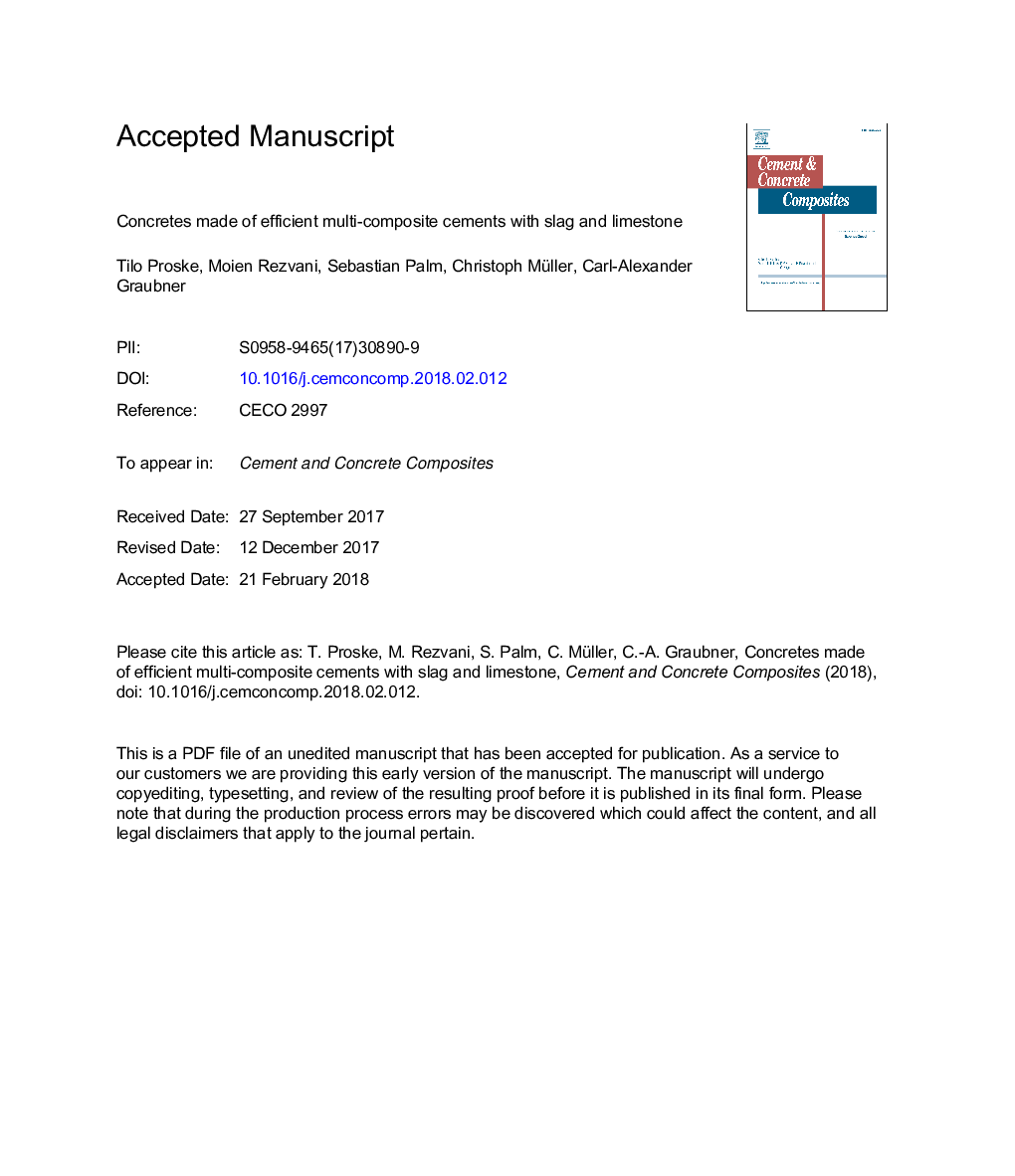| Article ID | Journal | Published Year | Pages | File Type |
|---|---|---|---|---|
| 7883719 | Cement and Concrete Composites | 2018 | 25 Pages |
Abstract
Due to the limited availability of slag, the slag content was limited to 30â¯wt.-% for multi-composite plant cements. The performance of concretes made of such cements containing 50%, 35% and 20% clinker and 20%, 35% and 50% limestone respectively were experimentally analyzed. The results revealed that concrete made of cement with 50â¯wt.-% clinker, 30â¯wt.-% GGBFS and 20â¯wt.-% limestone and a w/c-ratio of 0.50 could exhibit comparable hardened properties compared to reference concrete made of slag cement CEM III/A 42.5â¯N (with 50â¯wt.-% slag) with the same w/c-ratio. Concrete made of cements with clinker content of 35â¯wt.-% and a reduced w/c-ratio of 0.40 could result in a performance similar to the reference concrete made of CEM III/A 42.5â¯N. Further reduction of clinker content to 20â¯wt.-% was possible only at a low w/c-ratio of 0.35. Life cycle assessment (LCA) analysis revealed that the application of such multi-composite cements can lead to a concrete with a remarkable lower global warming potential up to about 35% compared to the concrete made of German average cement with a similar performance.
Related Topics
Physical Sciences and Engineering
Engineering
Industrial and Manufacturing Engineering
Authors
Tilo Proske, Moien Rezvani, Sebastian Palm, Christoph Müller, Carl-Alexander Graubner,
